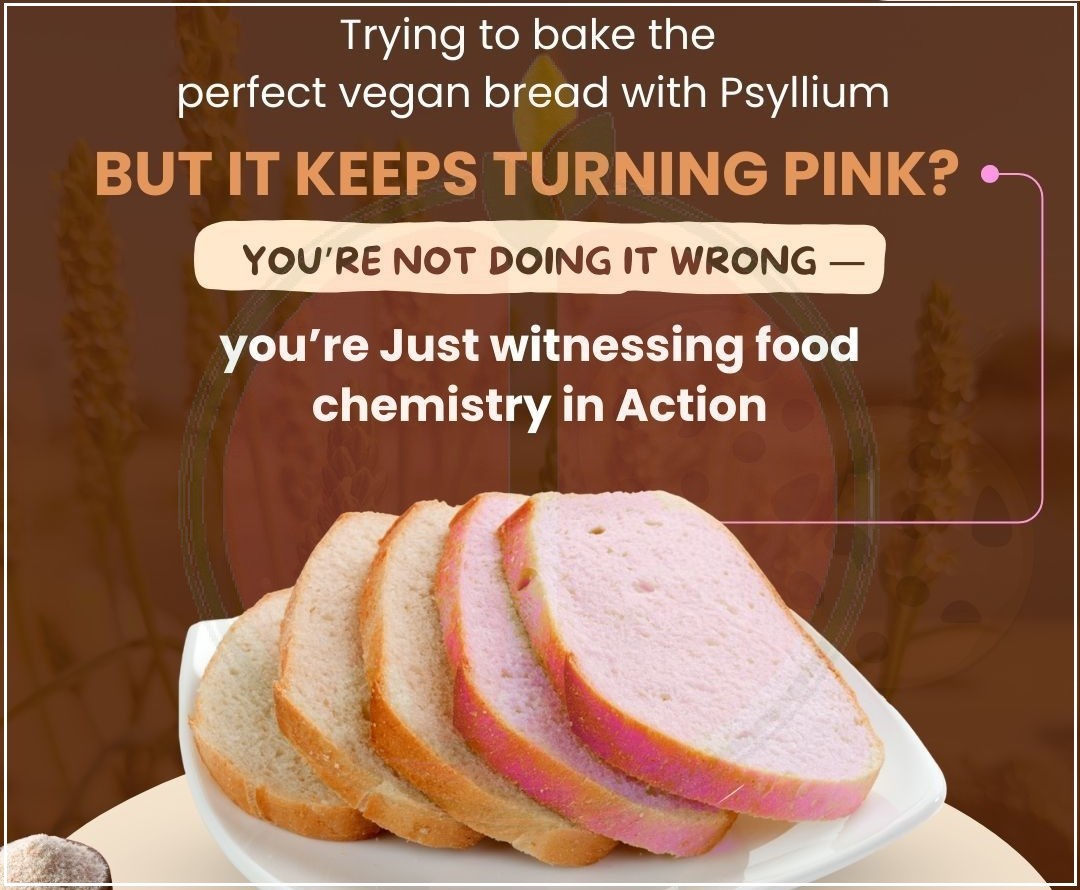Have you ever added Psyllium Husk to your gluten-free or vegan bread recipe and noticed an unexpected pink or purple tint in the final loaf?
Don’t worry — your ingredients aren’t bad, and your baking isn’t off. There’s a fascinating science behind it.
🔬 The Science Behind the Color Shift
Psyllium husk naturally contains polyphenols similar to anthocyanins, the same plant compounds found in berries and red cabbage. These compounds are pH-sensitive, meaning they change color depending on the acidity or alkalinity of the surrounding environment.
In alkaline baking conditions — like doughs high in baking soda, yeast, or those made without eggs — these compounds can react with the environment, resulting in a purple or pink coloration during or after baking.
🥖 How to Fix It – 3 Simple Solutions
Here are some easy ways to maintain a clean bake without compromising on structure or nutrition:
✔️ Adjust pH
Add 1–2 teaspoons of lemon juice or apple cider vinegar per loaf. This acid helps neutralize the alkalinity and stabilize the color.
✔️ Use the Right Amount
Stick to 2–3% psyllium husk by flour weight. This ensures proper structure without triggering excessive pH reactions.
✔️ Control Proofing
Avoid overproofing in warm, humid conditions, which can exaggerate color changes due to prolonged fermentation and pH shifts.
💡 Formulation Help, Backed by Science
At Jyot Overseas, we understand that psyllium is more than just a fiber source — it’s a functional ingredient that can transform the texture, moisture, and structure of modern baked goods.
Whether you’re developing a vegan, gluten-free, or clean-label product, our premium Psyllium Husk is designed to perform consistently — visually and nutritionally.
🧪 Need help perfecting your formulation?
Let’s work together to ensure your product delivers the results your consumers expect.
📩 Reach out to us: exports@jyotoverseas.net


